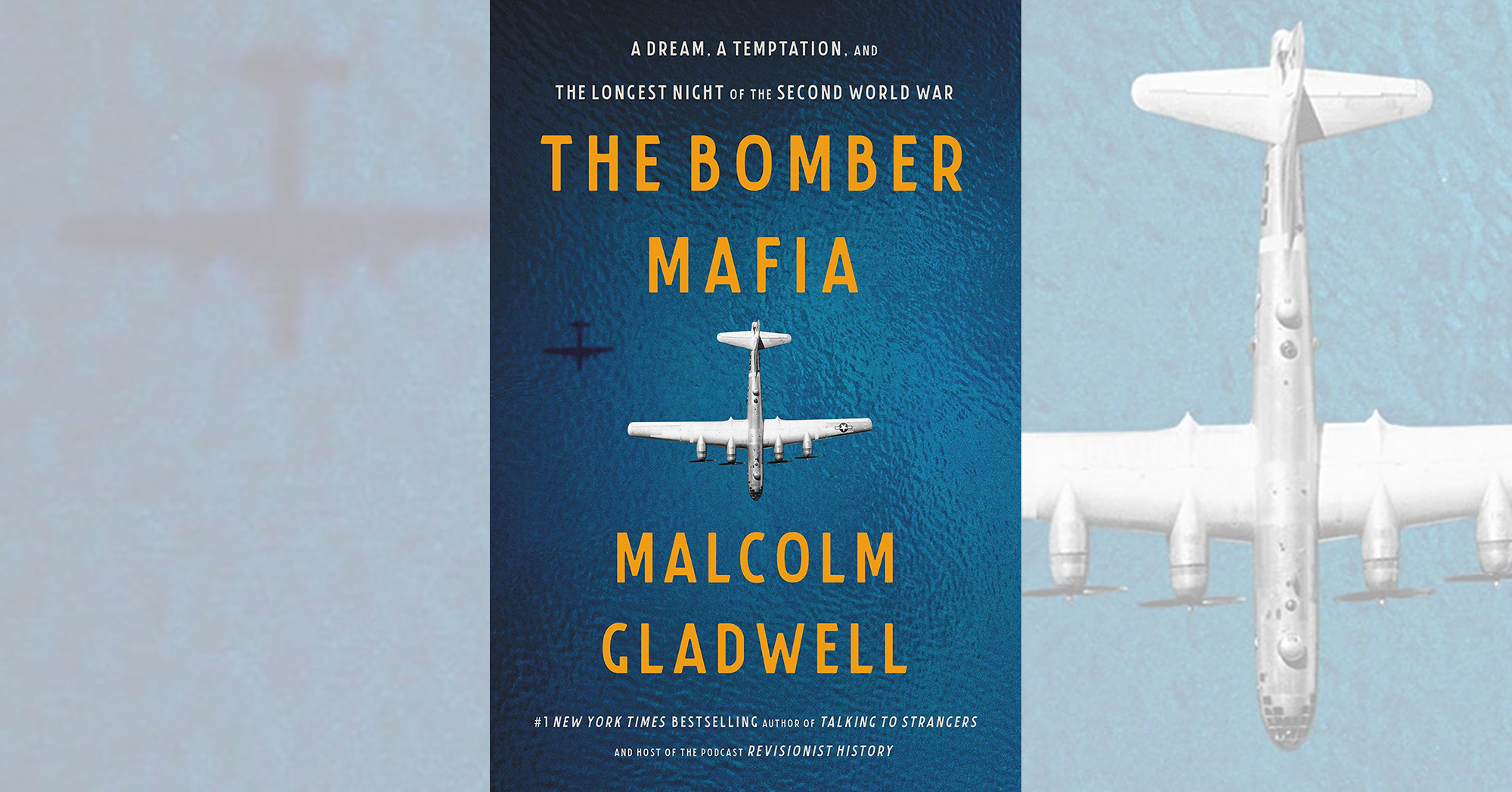The Bomber Mafia: A Dream, a Temptation and the Longest Night of the Second World War, by Malcolm Gladwell, Little, Brown and Co., New York, 2021, $27
Departing from his usual path, New York Times bestselling writer Malcolm Gladwell addresses a still heated historical debate: Was Allied carpet bombing during World War II reasonable or criminal? Everyone, generals included, hated the mass slaughter of World War I. Airpower had played only a modest role, but technology steadily improved during the interwar period, and by the 1930s military pundits were concluding that bombers—armored, fast and high-flying and thus impervious to fighters—would rain destruction and decide wars.
Warning that The Bomber Mafia “recounts how dreams go awry,” Gladwell focuses on Curtis LeMay and Haywood Hansell, both of whom ultimately became highly influential U.S. Army Air Forces generals. Each attended the Air Corps Tactical School in Montgomery, Ala., where influential faculty members known as the “Bomber Mafia” taught that precision bombing was the wave of the future. That in turn became America’s strategy—and it was unique. Like all Europeans, Adolf Hitler believed indiscriminate bombing would succeed by spreading mass panic. Although that didn’t work during the 1940–41 Blitz, Britain followed the latter strategy throughout the war, and it also didn’t work. A “Bomber Mafia” believer, Hansell sent missions to specifically target German and, later, Japanese industrial targets. Even then analysis revealed terrible accuracy.
Professional contrarian Gladwell is the rare historian who admires LeMay, inspiration for the archetypal cigar-chomping villain of such antiwar films as Doctor Strangelove. A believer in little more than solving problems and smiting the enemy, he rose rapidly in rank in Europe, flew the lead plane on many missions and seemed impervious to fear and doubt.
In October 1944, as Japan came within range of Boeing B-29 Superfortresses flying from the newly conquered Marianas, Hansell’s XXI Bomber Command conducted precision daylight raids. The results disappointed everyone, but foremost Hansell’s superiors, who replaced him with LeMay in January 1945.
LeMay would take the credit, but AAF leaders Henry H. “Hap” Arnold and Lauris Norstad had been suggesting firebombing to a reluctant Hansell. LeMay had no objection, and his early low-level night mission over Tokyo on March 9 and 10, 1945, remains the most destructive raid in history. Thereafter until the war’s final day his planes razed scores of large and medium-sized Japanese cities, killing some half million civilians. He also sent the two B-29s armed with atomic bombs, though in his mind the new weapon wasn’t a game changer but merely part of the campaign.
Mildly controversial at the time, the debate over the morality of America’s indiscriminate bombing has long since become ideologically toxic, as revisionist writers have overlooked or intentionally discarded evidence of its effectiveness. So did it shorten the war? Gladwell’s answer is a cheerful “some people think it did.” While readers on either side of the debate will likely squirm, they’ll keep their eyes glued to the page.
—Mike Oppenheim
This post contains affiliate links. If you buy something through our site, we might earn a commission.





